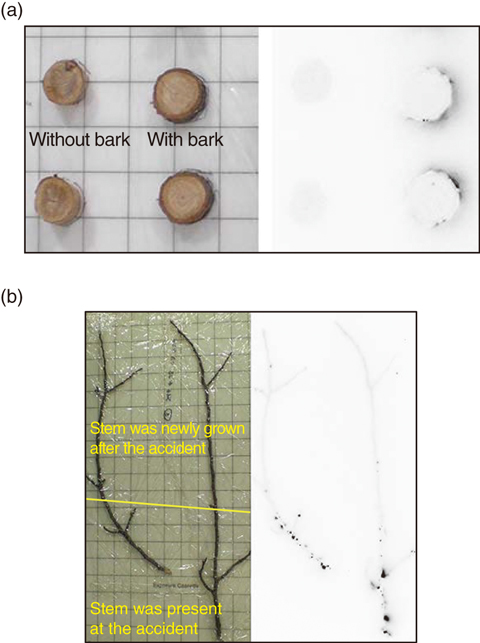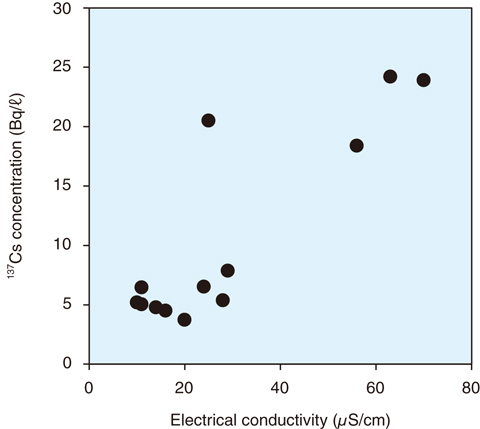
Fig.1-28 Autoradiograph in a deciduous broad-leafed tree

Fig.1-29 Relationship between radioactive Cs (137Cs) concentration and electrical conductivity in a dissolved fraction of stemflow
Numerous radionuclides were released into the environment as a result of the accident at the TEPCO’s Fukushima Daiichi NPS (1F), which occurred as a result of the Great East Japan Earthquake on March 11, 2011. Radioactive cesium (Cs) isotopes with relatively long half-lives are still present in the environment. Deciduous broad-leafed trees such as Konara oak, Mizunara oak, and Japanese chestnut are used in people’s daily lives as forest products (firewood and mushroom cultivation). From the perspective of the use of forest products, it is important to understand the radioactive Cs behavior in these trees. At the time of the 1F accident, because the deciduous trees were in a dormant stage and their leaves ware falling, released radioactive Cs was caught in the branches and trunks. In cases where the radioactive Cs deposited onto the surface of a tree was transferred inside, some of the radioactive Cs was transferred to newly generated branches and leaves after the 1F accident. In contrast, the radioactive Cs on the trees’ outside can be transferred by rain running down the trunk (stem flow). To elucidate the distribution of radioactive Cs and the radioactive-Cs-transfer mechanism to stemflow in deciduous broad-leafed trees, we surveyed the radioactive-Cs distribution and concentration in the stems of Chestnut trees growing in deciduous broad-leafed forest located approximateyl 35 km from 1F as well as the radioactive-Cs concentration and the characteristics of the soluble fraction (the solution that passed through a filter with a pore size of 0.45 μm) of stemflow.
On the bark surface of the chestnut trees that was presented at the time of the 1F accident, the radioactive Cs had a heterogeneous and spotty distribution. In contrast, radioactive Cs on branches newly grown after the 1F accident was uniformly distributed (Fig.1-28). The radioactive-Cs concentration in the bark was approximately 10 times that of rest of the wood. The radioactive-Cs concentration in the dissolved fraction of the stem flow was approximately 10−3 times that on the bark. Because radioactive-Cs concentration in the bark is still high and that in the soluble fraction of stem flow is low, elution of radioactive Cs from the trees to the stem flow would occur very slowly. Electrical conductivity is an index of the flowability of electricity in the solution and depends upon the abundances of ions in solution. There was a positive correlation between the radioactive-Cs concentration and the electrical conductivity of the dissolved fraction of the stem flow. This result suggests that the predominant ions (nitrogen, phosphorus, sulfur, potassium, calcium, magnesium, manganese, etc.) and radioactive Cs in the stemflow are controlled by the same elution mechanism (Fig.1-29).
We need to study the elution mechanism of radioactive Cs and other ions into the stem flow.